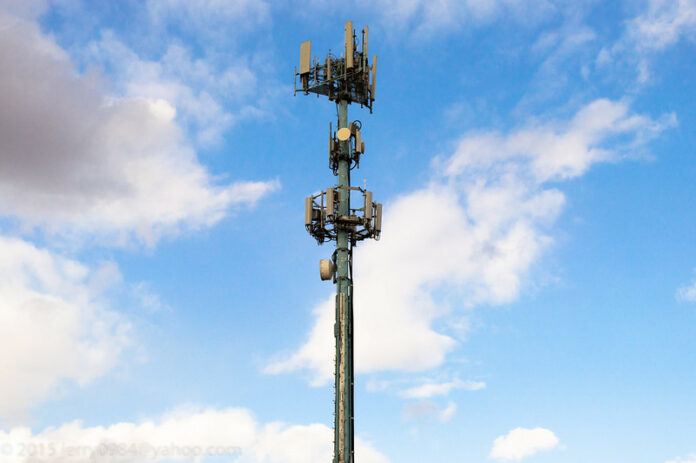A potential communication tower led to the Kosciusko Area Plan Commission voting Wednesday to recommend that a rezoning be denied.
The recommendation will go before the county commissioners at 9 a.m. Dec. 23.
The petition from Nick Deeter is to rezone ground from a residential to an agricultural district. The 10.76 acres is on the east side of North Prairie Street and zero feet south of CR 400N in Plain Township, according to Plan Director Dan Richard. It is near commercial, residential and agricultural areas.
Steve Snyder, attorney for Deeter, said he wasn’t sure when the tract of ground originally was zoned residential but it’s been historically used for agricultural purposes “forever.”
He said the current residential zoning places some restrictions on what can be done with the 10.76 acres. “But one of the things we’re pretty certain of is that it’s not good for residential development because it’s simply not large enough. A 10-acre tract subdivision has no economic benefit to it at all when you look at the requirements” of lot size, rights-of-way and internal roads. He said there was no sewer available, and the cost to develop residential would be prohibitive.
Plan Commission President Lee Harman asked Snyder what the motivation was behind Deeter’s rezoning request.
Snyder said, “There had been an application made to place a communication tower on the property, and it can’t be done in a residential district. It has to be zoned agricultural or commercial.”
If the plan commission and commissioners approved the rezoning, it would be up to the county Board of Zoning Appeals to grant an exception for the AT&T communication tower, if that takes place, Snyder said.
Richard said the agricultural practices could continue on the property as it is without the rezoning. If it were rezoned agricultural, he said it opens the door for several exceptions, including the communication tower and animals, but also other exceptions that Richard said could be “pretty harmful” to surrounding residential areas.
There already is a Verizon tower closer than the 2-mile setback required by county ordinances, Richard said, so not only would AT&T need BZA approval for an exception to the tower but also for a variance on the location.
When the county approves a communication tower, Richard said it does so on the condition that other communication providers be allowed to “co-locate” on the tower.
Another concern Richard had was the tower’s relationship to the Warsaw Municipal Airport.
“This is within the airport approach zone for the runway that runs east-west, mainly, and we haven’t had anything from FAA or the local airport on what impact” a potential tower could have on the approach, he said.
The 10.76 acres is about 800-900 feet south of Warsaw city limits.
In response to Richard’s concerns, Snyder said the potential tower was a consideration for the zoning board, and the plan commission was tasked with deciding only whether to rezone the property or not.
Any tower that goes up will be in compliance with FAA regulations, Snyder said.
As for AT&T co-locating on the Verizon tower to the north, Snyder said Verizon has a covenant with the property owner that prohibits any other user for cell towers. Richard said that covenant then violates the BZA approval of the tower. Richard said the county specifically wants co-location when a tower is put up, so that covenant may be something the Plan Commission may have to go after in the courts.
“Then you can go after Verizon because we can’t convince them to do it. And if you want to tackle Verizon, fine. What AT&T has told me is, that every time they try to accomplish co-location with Verizon, it is not a successful attempt,” Snyder said.
He said the Deeter property is within a dead spot for AT&T, which has researched the areas and determined Deeter’s property is the only one that provides the coverage to fill in the space.
“As 5G comes in, that’s going to be even more important because the placement of those towers is going to generate the ability for the extremely fast broadband that 5G is presenting,” Snyder said.
He reminded the plan commission several times that before them was just a rezoning consideration and the property has been used for agriculture for years. The BZA would be charged with considering the tower.
Snyder also told the board that, if it’s approved and if the tower goes in, Magical Meadows needs a hay field and Deeter would offer the property for them to use, at no cost. Magical Meadows would then plant hay on the property and provide food for its horses.
Magical Meadows provides therapeutic riding programs for children, youth and adults with physical and/or developmental disabilities to help them improve physical health, relax tight muscles, increase balance, build muscle strength, sharpen hand/eye coordination, improve social skills, and gain a sense of control and self-confidence, according to its website.
The only person speaking against the rezoning was Gene Hawkins, who owns property adjacent to Deeter’s tract of land. He said he didn’t have a problem with the property going from corn and soybeans to hay for Magical Meadows, but he was opposed to a tower. He said other residents in the area also would be opposed and they would have been at the meeting if they knew a cell tower might go on the property.
Kevin McSherry, Plan Commission member, said rezoning the property to agriculture would be a step backward. He also expressed some concern to the potential tower’s proximity to the airport.
McSherry made the motion to deny the rezoning, which was approved 7-0.





